Here are some of the facts
presented in the movie. Explanations are under the pictures.
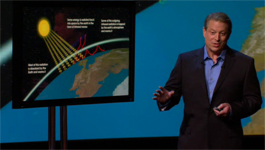
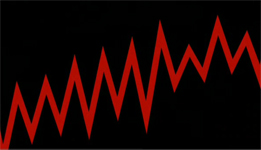
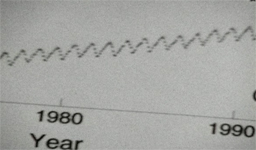
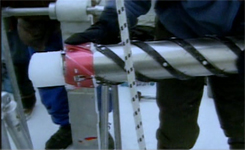
Most of the light from the Sun reflects off of the Earth, but
carbon dioxide traps the Sun's rays and makes the air warm. Of course
other things on the Earth are also heated by the Sun, but carbon
dioxide absorbs more heat than the other gasses
Every year the amount of carbon dioxide in the atmosphere
decreases and then increases again because of summer and winter. In the
summer, plants in the Northern Hemisphere absorb the carbon dioxide and
in the fall and winter they give it off. Most land is in the Northern
Hemisphere so there is a difference.
The amount of carbon dioxide usually returns to about the same
level,
but recently it has been increasing year by year. By drilling ice in
the North Pole, scientist can tell how
much carbon dioxide was in the air as long as 650,000 years ago!
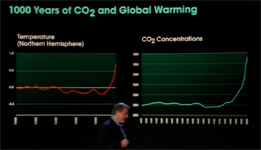
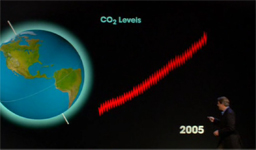
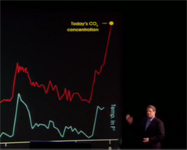
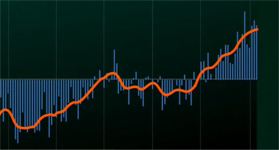
Although the amount of carbon dioxide has naturally risen and
fallen over time since long ago, the recent rise is more drastic than
ever before. It has reached more than double its previous highest
point and soon could reach triple.
Looking at the graph, you can see the rise is not a natural variance.
It is a much greater and sharper increase than that, especially in the
last 50 years.
You can also see that the average
temperatures on the Earth increase along with the amount of carbon
dioxide. They are obviously linked. In 2005 India hit 50 degree weather
for the first time and 200 cities in the U.S. had the highest
temperatures ever. 10 of the hottest years ever recorded
have been within the last 14 years. This is not a coincidence.
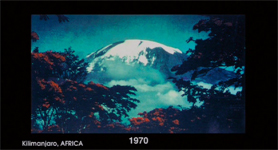
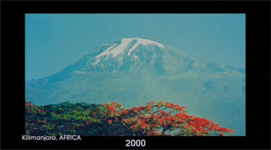
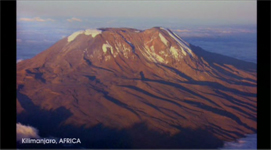
There are many other effects we can see on the Earth. For
example the snows of Kilimanjaro are disappearing. The snow will be
gone within 10 years.
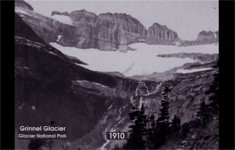
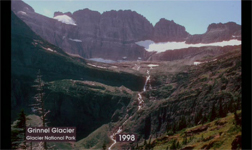
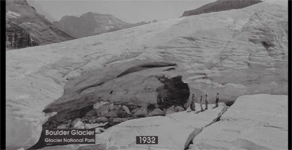
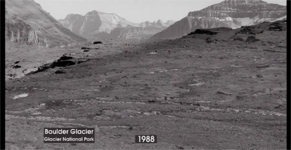
Many other mountains and glaciers are melting too. Glaciers are
important because they
give us drinking water. 40% of all the people in the world get drinking
water from rivers fed more than half by melt water from glaciers.
Within 50 years, 40% of the people in the world will face water
shortages because the glaciers are disappearing.
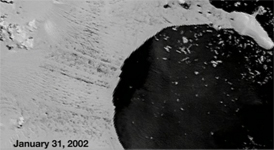
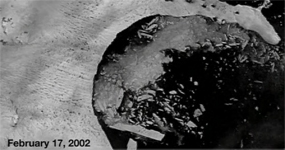
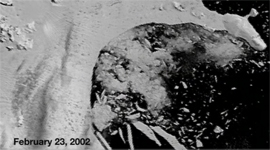
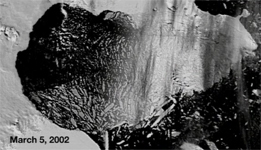
Perhaps the scariest part is that the polar caps are breaking up
and melting. When the ice melts, it raises the level of the sea because
the ice was floating. This is just like when a glass of ice water melts
and overflows. This could be dangerous for many cities that are near
the sea, for example Osaka! If Greenland or the North Pole melts, it
will raise the sea level by 10 to 20 feet, enough to flood many cities.
Another problem is that the ice melting causes the sea to warm.
This is because ice is white so it reflects 90% of the Sun's heat, just
like a mirror, but water is dark so it absorbs 90% of the heat. It's
like if you leave something black near a window in the summer. When the
ice melts there is more black and less white. This warms things up in
the ocean.
The polar ice has thinned 40% in the last 40 years and within 50
to 70 years it will disappear in the summer time if nothing is done to
stop global warming.
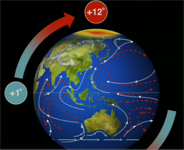
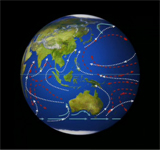
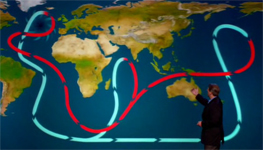
Because of sea currents, airflows, and dark water replacing
white ice, the Poles heat up faster
than the rest of the Earth. The sea flows all around the Earth so the
sea is getting warmer all over.
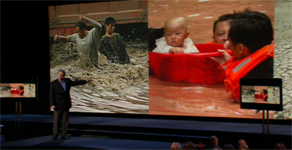
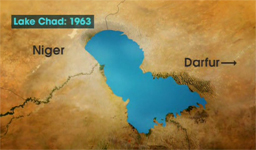
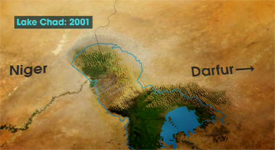
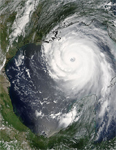
A warmer sea also causes changes in weather events. Flooding and
droughts are increasing. A warmer ocean makes it rain harder and hotter
weather dries the earth. Hotter weather means that more water is
evaporated into the air both from the land and the sea.
Extreme weather events like huge typhoons are also
increasing. Japan had a record number of typhoons in 2004 and a storm
like Katrina would never have been possible 50 years ago when the
oceans were cooler. The reason Katrina was so strong is that it gained
power over the Gulf of Mexico which is warmer than before.
The future will see stronger storms for this reason.
Population growth, energy use, and deforestation are the main
causes for the increase in the carbon dioxide levels and the carbon
dioxide is causing the global warming. These are just some of the
effects of global warming on nature. Next time we will study about
solutions.
